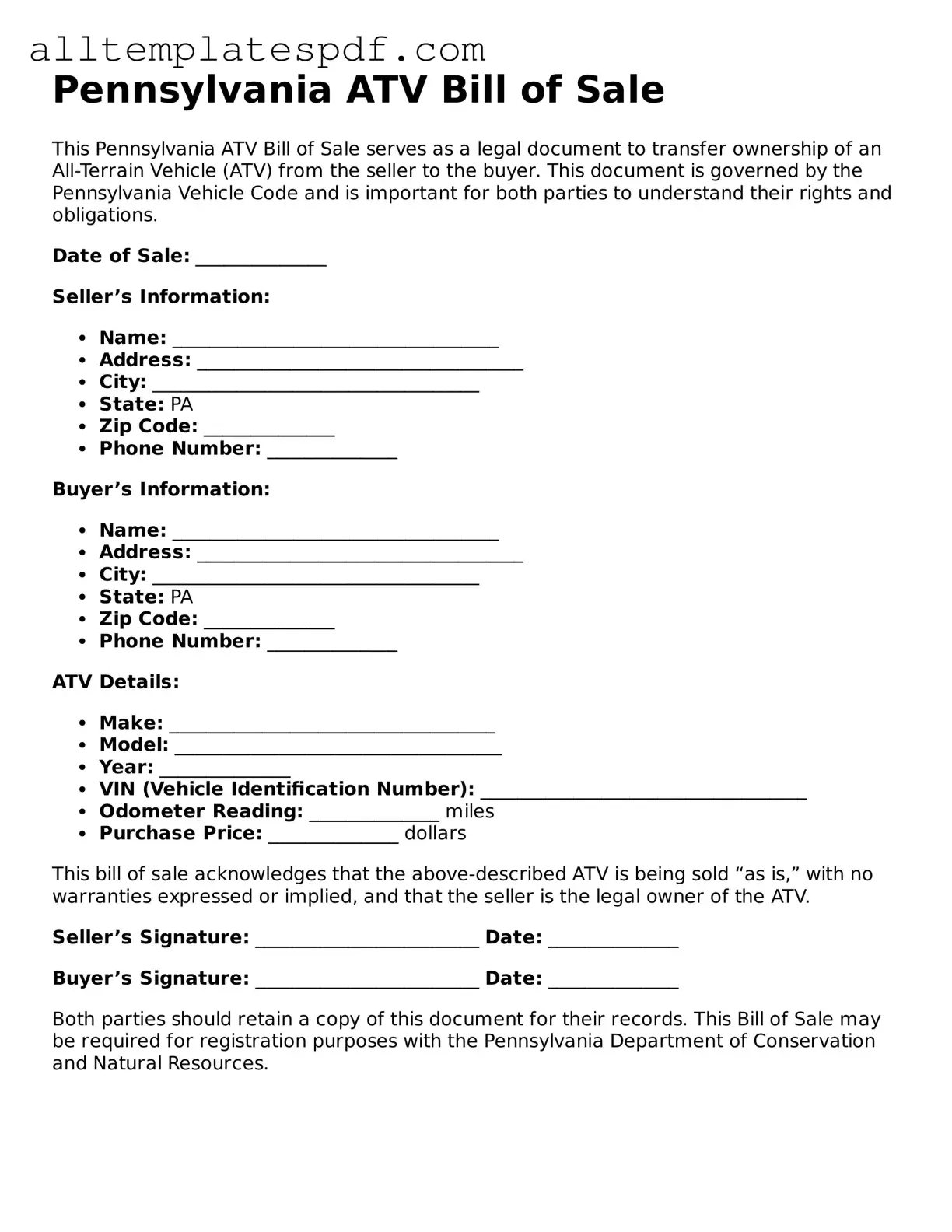When completing the Pennsylvania ATV Bill of Sale form, individuals often overlook critical details. One common mistake is failing to include the correct date of the transaction. This date is essential as it marks the official transfer of ownership. Without it, the document may not be valid for future reference.
Another frequent error is neglecting to provide complete information about the all-terrain vehicle. The form requires specific details such as the make, model, year, and Vehicle Identification Number (VIN). Omitting any of this information can lead to complications when registering the vehicle or during any future sales.
People sometimes forget to include the names and addresses of both the buyer and the seller. This information is crucial for establishing the identities of the parties involved. Incomplete contact details can create confusion and may hinder the transaction process.
Inaccurate spelling of names is another mistake that can occur. A misspelled name can cause issues with ownership records and may lead to disputes. Ensuring that all names are spelled correctly is an important step in the process.
Many individuals also fail to sign the document. Both parties must sign the Bill of Sale for it to be legally binding. Without signatures, the form may not hold up in any disputes or legal matters.
Another common oversight is not providing a purchase price. The Bill of Sale should clearly state the amount paid for the ATV. This information is important for tax purposes and for establishing the value of the transaction.
Some people may not realize that the form must be filled out in ink. Using pencil or other erasable mediums can lead to alterations or misunderstandings later on. It is advisable to use a permanent ink pen to ensure that the information remains intact.
Finally, failing to keep a copy of the completed Bill of Sale can be a significant mistake. After signing, both parties should retain a copy for their records. This can serve as proof of the transaction and protect both the buyer and seller in the future.
